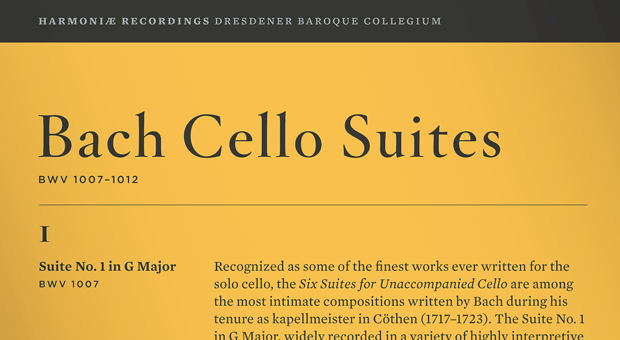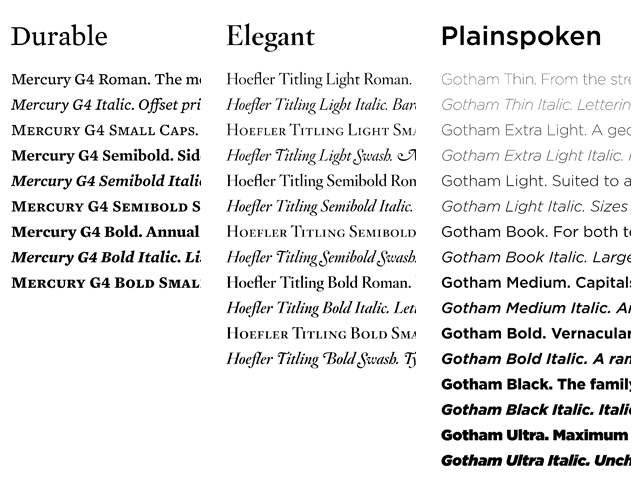Struggling for which font to pick for your logo? This article was sent to me by a friend which helps you combine three hierarchies of typefaces and not make it look ‘messy’.
Is there a way to know what fonts will work together? Building a palette is an intuitive process, but expanding a typographic duet to three, four, or even five voices can be daunting. Here are four tips for navigating the typographic ocean, all built around H&FJ’s Highly Scientific First Principle of Combining Fonts: keep one thing consistent, and let one thing vary.
1. A palette with wit: use typefaces with complementary moods to evoke an upbeat, energetic air.
It’s the interplay between fonts that gives them energy. The more distant the moods in a typographic palette, the friskier the design will be. Here, three fonts with distinctive silhouettes have been chosen for their contrasting dispositions: the unabashed toughness of Tungsten is a foil for both Archer’s sweetness, and the cheekiness of Gotham Rounded.

2. A palette with energy: mix types from the same historical period whose families have different features.
Three type families with nineteenth century roots, thrown together in a cheerful typographic riot. Choosing type families with different features helps prevent redundancy: here, the brawny variations of The Proteus Project are reserved for headings, Sentinel’s six weights of romans and italics recommend it to text, and Knockout’s nine different widths helps the sans serif fill in the cracks.
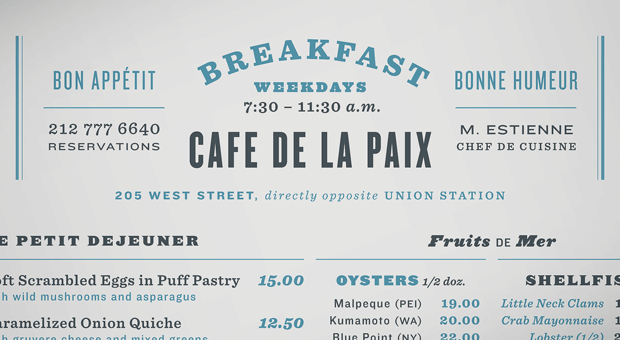
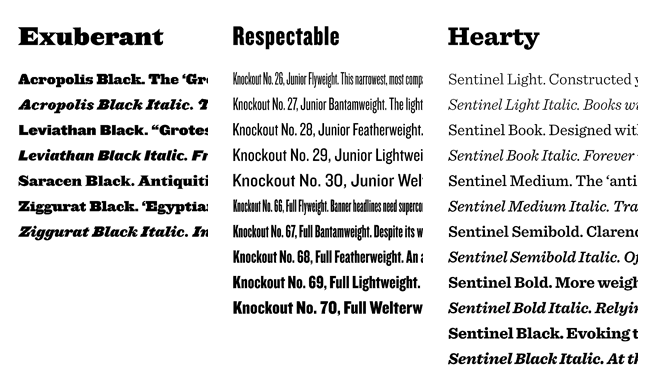
3. A palette with poise: mix typefaces with a similar line quality if they offer different textures.
What do a neoclassical modern, a suave sans serif, and a sporty slab have in common? All are meditations on precision, though each has a different texture. H&FJ Didot achieves its crispness through the thinnest possible serifs, Verlag through its insistently geometric motifs, and our new Vitesse typeface through its pairing of machined edges and racy curves. Together, these three mechanical faces create a dramatic typographical tension.
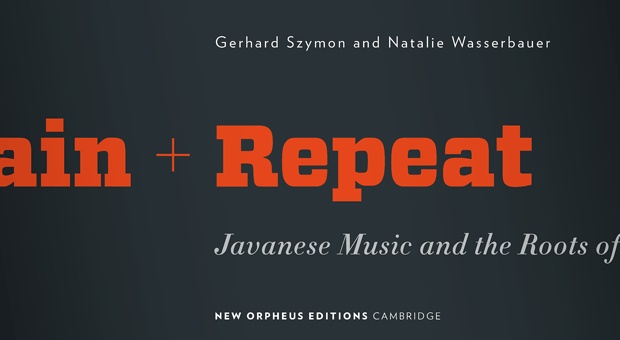
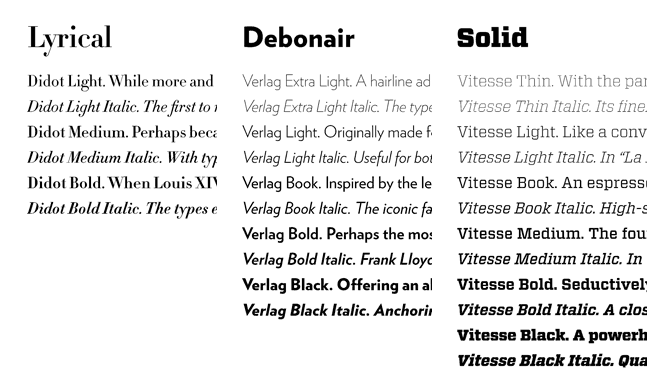
4. A palette with dignity: mix typefaces with similar proportions and give each a different role.
A clever way to combine typefaces with similar proportions is to assign each a different purpose, and to limit each to a specific range of sizes. Here, two hard-working typefaces are assigned supporting roles: the seriffed Mercury serves for text, and the sans serif Gotham furnishes all the annotations. The star of the show is the sophisticated Hoefler Titling, which preserves its spotlight by appearing only occasionally, and always in large sizes.
